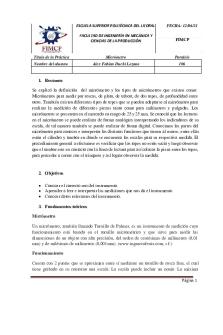Alex Grant Photosynthesis PDF

| Title | Alex Grant Photosynthesis |
|---|---|
| Author | Alox Gant |
| Course | Molecular Biology |
| Institution | Harvard University |
| Pages | 7 |
| File Size | 608 KB |
| File Type | |
| Total Downloads | 93 |
| Total Views | 187 |
Summary
photosynthesis...
Description
Photosynthesis
Animations Student Worksheet
INTRODUCTION This worksheet complements the animation series PROCEDURE 1. This animation series contains seven parts. Read the questions below for each part before watching it. 2. After watching each part, answer the questions in the spaces provided. 3. After completing all seven parts of the animation, answer the summary questions in Part 8. QUESTIONS PART 1: OVERVIEW 1. Which of the following kinds of organisms do photosynthesis? Select all that apply. _
_plants
_ _fungi
_
_animals
_ _algae
_ _all bacteria
_
_some bacteria
2. What is the overall purpose of photosynthesis?
3. On Diagram 1, fill in the labels with photosynthesis’s main inputs and outputs of matter and energy.
PART 2: CHEMICAL PROCESS 1. Complete the following sentence. Photosynthesis is a set of ____________________________ in which ____________energy is converted to __________________energy.
Photosynthesis www.BioInteractive.org
Published March 2019 Page 1 of 7
Photosynthesis
Animati ons Animations Student Workshee Worksheett
2. On Diagram 2, fill in the labels with the following descriptions. Some of the objects have multiple labels. • • • • • • • •
water (H2 O) carbon dioxide (CO2) oxygen (O2) G3P (sugar) electron acceptor electron donor carbohydrates energy input
PART 3: LEAF STRUCTURE 1. In what plant structures does photosynthesis occur? Make your description as specific as you can.
2. On Diagram 3, complete the following tasks. a) Draw how CO 2 gets into the leaf. b) Draw how O2 gets out of the leaf. c) Label the name of the structure through which these gases pass.
3. What structure is used to transport organic molecules from the leaf to other parts of the plant?
4. Why are leaves green?
Photosynthesis www.BioInteractive.org
Published March 2019 Page 2 of 7
Photosynthesis
Animati ons Animations Worksheett Student Workshee
PART 4: CHLOROPLASTS 1. On Diagram 4, label the following items. Multiple labels may apply to the same part of the diagram. • • • •
location of the light reactions location of the Calvin cycle thylakoid stroma
2. On Diagram 5, fill in the labels with the following descriptions to show the connections between the light reactions and the Calvin cycle. • • • • •
carbon dioxide (CO 2) oxygen (O2) G3P (sugar) ATP NADPH
3. How does a plant increase its biomass?
PART 5: LIGHT REACTIONS Photosystems I and II (PSI and PSII) 1. What is the function of the photosystems?
2. On Diagram 6, complete the following tasks.
Photosynthesis www.BioInteractive.org
Published March 2019 Page 3 of 7
Photosynthesis
Animati ons Animations Student Workshee Worksheett
a) Label PSI and PSII. b) Draw the path of the electron transport chain.
The Events of the Light Reactions 3. For PSII, the cytochrome complex, and PSI, draw and label what happens at that structure on Diagram 6. Then describe the events in a bulleted list in Table 1.
Table 1: Descriptions of the steps in the light reactions. Structure What is happening with matter? PSII
What is happening with energy?
cytochrome complex
PSI
4. At the end of the electron transport chain, where is the light energy that was absorbed and converted by chlorophyll stored? List two answers.
Photosynthesis www.BioInteractive.org
Published March 2019 Page 4 of 7
Photosynthesis
Animati ons Animations Worksheett Student Workshee
Chemiosmosis and ATP Synthase 5. Label the ATP synthase on Diagram 6. 6. Describe how the proton (H+) gradient is used to make ATP.
7. What two molecules bring chemical energy from the light reactions to the next stage of photosynthesis, the Calvin cycle?
PART 6: CALVIN CYCLE 1. Label Diagram 7 with the three phases of the Calvin cycle.
Briefly describe what is going on in each phase and answer the questions shown. Phase 1 (Diagram 8) Description:
What enzyme catalyzes the reaction in this phase?
Photosynthesis www.BioInteractive.org
Published March 2019 Page 5 of 7
Photosynthesis
Animati ons Animations Student Workshee Worksheett
Phase 2 (Diagram 9) Description:
Phase 3 (Diagram 10) Description:
Why is the series of reactions in the Calvin cycle called a “cycle”?
2. At the end of the Calvin cycle, what molecules have the energy that originally came from light?
PART 7: BIOSYNTHESIS 1. Complete the following sentence based on Diagram 11. Glyceraldehyde-3-phosphate (G3P) can be used by plant cells to make ___________________ and _________________. 2. Which molecule in Diagram 11 is used to transport energy to other parts of the plant?
3. Which molecule in Diagram 11 is stored in the plant for later use as an energy source?
Photosynthesis www.BioInteractive.org
Published March 2019 Page 6 of 7
Photosynthesis
Animati ons Animations Student Workshee Worksheett
PART 8: TEST YOUR KNOWLEDGE 1. Based on everything you’ve learned from the animations, what is the overall purpose of photosynthesis?
2. Describe how oxygen gas (O2) is produced during photosynthesis. Include the specific structures in the plant where the reaction occurs.
3. Describe the path of an electron from a molecule of water to the sugar G3P.
4. Describe how ATP is produced in the light reactions.
5. Which of the following statements best explains how the energy in a photon of light is stored in a molecule of the sugar G3P? ________ a. Light energy directly provides energy to RuBP and CO2, which produce G3P in the Calvin cycle. b. Light energy directly provides energy to ATP synthase, which produces ATP during the light reactions. c. Light energy energizes electrons to make ATP and NADPH, which provide energy to produce G3P in the Calvin cycle. 6. When three molecules of carbon dioxide (CO2) react with three molecules of RuBP during the Calvin cycle, six molecules of the sugar G3P are produced. One G3P molecule exits the Calvin cycle during Phase 2. What happens to the other five G3P molecules?
Photosynthesis www.BioInteractive.org
Published March 2019 Page 7 of 7...
Similar Free PDFs

Alex Grant Photosynthesis
- 7 Pages

Grant czarnobyl
- 9 Pages

Alex Questions
- 17 Pages

Grant Proposal
- 7 Pages

Grant Proposal
- 15 Pages

CONFRACS Government Grant
- 3 Pages

Alex Duchi - Micrómetro
- 13 Pages

Answers to Alex Sanders
- 6 Pages

Capitals - Stan Grant
- 2 Pages

Historia Psicopatologia Alex
- 4 Pages

Photosynthesis Lab
- 8 Pages

Photosynthesis PAG
- 2 Pages

Reviewer - Government Grant
- 2 Pages

Photosynthesis Notes
- 4 Pages
Popular Institutions
- Tinajero National High School - Annex
- Politeknik Caltex Riau
- Yokohama City University
- SGT University
- University of Al-Qadisiyah
- Divine Word College of Vigan
- Techniek College Rotterdam
- Universidade de Santiago
- Universiti Teknologi MARA Cawangan Johor Kampus Pasir Gudang
- Poltekkes Kemenkes Yogyakarta
- Baguio City National High School
- Colegio san marcos
- preparatoria uno
- Centro de Bachillerato Tecnológico Industrial y de Servicios No. 107
- Dalian Maritime University
- Quang Trung Secondary School
- Colegio Tecnológico en Informática
- Corporación Regional de Educación Superior
- Grupo CEDVA
- Dar Al Uloom University
- Centro de Estudios Preuniversitarios de la Universidad Nacional de Ingeniería
- 上智大学
- Aakash International School, Nuna Majara
- San Felipe Neri Catholic School
- Kang Chiao International School - New Taipei City
- Misamis Occidental National High School
- Institución Educativa Escuela Normal Juan Ladrilleros
- Kolehiyo ng Pantukan
- Batanes State College
- Instituto Continental
- Sekolah Menengah Kejuruan Kesehatan Kaltara (Tarakan)
- Colegio de La Inmaculada Concepcion - Cebu

